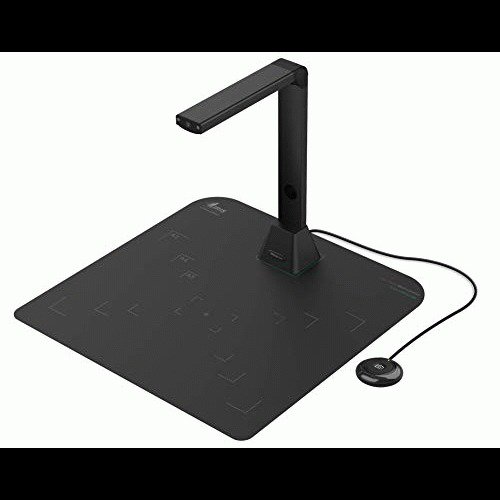The Best Scanners for Your Money
A scanner is a sort of hybrid between a home printer and a modernized fax machine, and the copies it makes are digital so they can be stored, emailed, and shared however you like. The scanners readily available for home use today can process text documents and photos, as well as specialized images such as maps, making them a very handy archival tool for the digital age.
While scanner technology hasn’t changed greatly in recent years, it has developed to the point where full-featured scanners that wouldn’t look out of place in a traditional office are now available in more economic, compact models that would fit perfectly in a home office. This means that more specialized scanners such as portable models, books, and photo scanners are more accessible (and affordable) than ever.
You might be tempted to buy a combination printer/scanner instead of separate dedicated devices, but the results may be less than satisfactory. Yes, it could save some office space and be convenient to have an all-in-one. But many combo printer/scanners don't handle either task particularly well, and the price for one of these devices can often exceed the combined cost of two separate machines.
How to pick the best scanner for you
When shopping for a new scanner, here are a few things to consider:
Resolution & dpi. The main purpose of a scanner is to make digital copies of documents and flat images (usually either text or photos), and they should look as crisp and clean as possible. At minimum, your scanner should be capable of a 300 dots per inch (dpi) resolution, though most dedicated document scanners today don’t go lower than 600 dpi. If you’re interested in scanning more delicate media such as film negatives, a much higher resolution of 4,800 dpi is greatly encouraged.
Scan size. The size limit for documents on your device is just as important as the resolution. Most scanners that focus on standard documents will fit all paper types (legal, A4, etc.), though some specialized or hybrid scanners (such as photo scanners) may not.
Scan speed. If you have a large stack of documents to get through, you’ll likely want a fast scanner. Depending on the size of your paper load, anything with a scan speed of 25 pages per minute or higher will help you make short work of your stack.
Document feeder features. If you only need a scanner for occasional use, a flatbed scanner is probably adequate. It features a lid and requires you to manually swap each page you want to scan. However, if you have a lot of paper to scan, you’ll want a machine with automatic document feeding (ADF) and duplex scanning (both sides of the page) capabilities to speed up the process.
Software. Depending on how specific your needs are, you’ll want to consider the software that comes bundled with your scanner. Basic software features include background cleaning (for smudged or damaged documents), PDF conversion, and connectivity with cloud storage apps. More advanced features can include OCR (text recognition capabilities), searchable PDFs, and photo editing software.
Best scanners
1. Best for low prices: Canon CanoScan LIDE 400 Slim Scanner
Modern scanners are able to go through thousands of pages in a day, but not everyone needs such powerful equipment, especially if it often costs hundreds of dollars. If what you need is a serviceable scanner that will help you digitize the occasional receipt or document, then you can’t go wrong with the LIDE 400 Slim.
It’s fairly compact — barely over an inch tall and just over a foot long — so it won’t take up valuable desk space. Despite its small size, it boasts an impressive 4,800 x 4,800 dpi resolution.
Because it’s a flatbed scanner, the LIDE 400 lacks automatic document feeding. However, if you’re not looking to scan documents in bulk, then this device will suit pretty much all your needs for less than $100.
2. Best for scanning books: IRIS IRIScan Desk 5 Pro
Courtesy of Walmart
Courtesy of WalmartDedicated book scanners can be bulky, requiring enough space to fit books of all sizes, usually on a special mount so that the machine can capture the image cleanly without forcing the pages open. The IRIScan Desk 5 Pro takes a different approach, consisting of only a fairly large placemat — big enough to fit up to A3 size paper — and an overhead camera to capture and convert the page images at up to 300 dpi.
Part of what makes this work is the device’s powerful image correction and text recognition software. These features smooth out distortions and give you the option of converting the image into a clean text document. Because the overhead camera can capture wide images, you can also scan non-standard documents such as maps, as long as you set the camera at an appropriate height. Best of all is that the placemat can be rolled up and put away when not in use, while the camera can fold onto itself, leaving you with an easily stored “stick” that’s just over a foot tall.
As if all this wasn’t enough, the camera can also be used as a webcam for presentations. The IRIScan Desk 5 Pro lacks wireless capabilities, but considering its many convenient features, this is a minor nuisance, at best.
3. Editor's pick & best portable scanner: Epson Workforce ES-300W Wireless Document Scanner
Phone apps can help you scan documents on the go, but they aren't going to do nearly as good a job as a portable travel-size scanner. And the ES-300W is one of the best portable scanners available.
In its most compact form (2.9” x 11.2” x 3.1”) this scanner can fit in a small travel bag and then open up to reveal a 20-page automatic document feeding tray that can scan up to 25 pages per minute. (That’s for single-sided documents; up to 50 pages per minute can be scanned if working with double-sided documents.) It is capable of operating via Wi-Fi or USB cable, and can upload documents directly to most cloud storage services. Plastic cards (such as ID cards) are also scannable, and any documents you feed into it can be converted into a searchable PDF, which is a special feature not all scanners have.
Its maximum resolution is 1,200 dpi, and that is more than enough for standard text documents and items such as plastic cards. The ES-300W also runs on a rechargeable battery, which means that you won’t be tied to an outlet when you need to work on the go.
4. Best for large workloads: Brother ADS-2800W Wireless Document Scanner
For many small businesses, there is always paperwork to be filed and stored, and a solid printer and scanner can sure come in handy. Ideally, you’d be able to buy something that can process as much paperwork as more traditional office equipment, for a fraction of the price. The Brother ADS-2800W gets the job done for around $500, which is less than half what most large-scale scanners cost.
It comes equipped with all the features that you would expect from its larger counterparts: automatic document feeding, double-sided scanning, 40-page loading tray, and uploads to cloud storage services, among others. What’s most impressive about this model is that despite its relatively small size — while it will take up considerable space on a desk, it’s still portable — it can scan up to 3,000 pages in a day, which is far more than a small or medium-sized office will typically need.
The ADS-2800W can also clean the backgrounds of dirty or damaged documents, and has security options that allow only selected users to access the scanner in the first place. One drawback is the fact that its loading tray isn’t very wide, so it can’t scan anything larger than A4 paper (8.5" x 14").
5. Best for photo scanning: Epson FastFoto FF-680W Photo and Document Scanning System
Archiving a print photo collection can be a hassle. Most scanners with a document feeder are not able to handle photos without damaging them, and using a flatbed scanner to go through a stack can be incredibly time-consuming. If what you really want is a dedicated photo scanner, the FastFoto FF-680W is among the best and most versatile of the bunch.
Its design uses curved trays both on top and at the bottom, so that scanned photos are gently cradled as they are processed. It can scan a stack of up to 35 photos in 5 minutes or less, and is also a reliable document scanner that can produce searchable PDFs.
Beyond that, the FastFoto FF-680W has Wi-Fi capabilities, and its bundled software can help you edit or correct errors in scanned images. Red-eye and background removal, image editing tools, and other useful features are packed into its accompanying software in order to help you make the most out of your scanned images.
More From Money:
The Best 3D Printers for Your Money
The Best Standing Desks for Your Money, According to Home Office Experts





